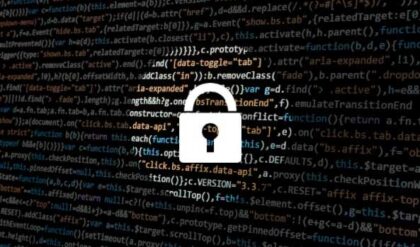Do you think your computer has a malware infection?
How many times do you have to take your laptop or desktop to a technician for repairs? How many of those visits can be linked to software problems? Malware attacks are a real problem, and there are a ton of statistics that back that up.
- About seventy-one percent of organizations experienced a transfer of malware activity across employee machines in 2019
- In 2020 so far, fifty-one percent of companies have reported business-disrupting ransomware attacks
- Sixty-two percent of professionals in cybersecurity believe their companies are understaffed in the cybersecurity department.
In 2020, malware attacks have declined slightly. A considerable part of the reason for this is companies are waking up to the importance of having top-notch cybersecurity measures. Angela Baker of essay writing service review outfit, Pick The Writer, thinks this awareness was amplified that the fact that people are currently working from home and have to access their company’s networks online via their PCs.
For the most part, installing a reliable antivirus software should shield your computer from malware issues. But sometimes, even the best antivirus software cannot catch all attacks. This puts the onus on you to be vigilant and be able to detect signs of a computer virus or other forms of malware in your system.
The presence of malware can manifest in a lot of ways. In this list, we’ve compiled five of the most common ways that you can detect malware and the steps to take to arrest the situation.
1. There are active browser extensions that you didn’t install.
Extensions are a practical element of an optimal browsing experience. From digital marketers and bloggers to designers and personal users, millions of people use extensions as part of their daily browser commitment. Hence, it is not uncommon that this could be an entryway for malware. This is especially true given that some extensions have a terrible security infrastructure, while some others are just designed to siphon personal data without your knowledge.
It is good practice to check your list of active extensions regularly. If you notice an extension on this list that you can’t remember installing or enabling, this could be indicative of the presence of malware on your computer.
In most cases, extensions are almost exclusively browser-based and have nothing to do with your computer’s memory. However, it is advisable to search the apps on your PC to see if the extensions you want to uninstall are there. After uninstalling them, you can head over to your browser to remove the extension. This is an essential step, whether you found the extension on your PC or not.
2. Your antivirus is disabled, and you can’t turn it back on.
Who turns off their antivirus? The answer is simple: nobody. So if you ever notice that your antivirus is inactive, you’re probably experiencing a malware invasion. If you try to reactivate it without success, that’s most likely further proof of malware. Malware creators are not resting, which means that having the current updates of your antivirus solution is paramount.
But malware exists that is explicitly designed to deactivate security solutions. You may notice that your antivirus is no longer updating or performing its pre-scheduled tasks like daily scans, etc.
This is a common malware problem. Usually, you’ll receive warning messages about your system’s vulnerability. However, you have to be proactive and check regularly.
If you use a Windows system, go to your Windows Defender Security Center and follow the prompts to resolve the issue. Secondly, if you have just updated your Windows or other software, this can affect some antivirus functions. Restart your system to see if anything changes.
Thirdly, if your antivirus has been compromised, you can run diagnostics with the help of a portable scanner. This type of antivirus solution comes in a thumb drive. The fact that it exists independent of your system means it can’t be affected by the malware.

3. Your computer’s performance is groggy.
There are many reasons why your system can suddenly slow down in terms of performance. Maybe you’ve got too many tabs open, or perhaps your system memory is full, or you’re trying to run a heavy software that needs all the juice it can get. These reasons are why people regularly clean up their system or save important stuff on their cloud accounts.
Diana Adjadj of Writing Judge, a writing recommendation service, says, “performing regular spring cleaning of your system’s memory is a faster way to know if it is under attack because if it is, the cleaning won’t work.”
As she suggests, this is a strong sign that you have a malware issue on your hands. Some malware strains can hijack your computer’s performance capabilities and allow cybercriminals to use them for their own gain. This means that these cybercriminals can draw from your system’s performance to perform nefarious acts online that can then be traced back to you.
It helps to close all apps that you are not currently using continually to prevent such a situation. On a Windows computer, visit the Task Manager to identify the apps draining the most juice from your CPU, memory, and bandwidth.
4. Your internet connection is unusually slow.
We’ve all experienced slow internet at one point or the other, and we all know how frustrating it can be. However, you can generally tell when your internet is slow and when a malware may have taken over. In the case of the former, your internet will likely slow down to unprecedented levels.
Usually, you’ll notice that your network is recording much more activity than you’re used to. This means that malware may have hijacked your bandwidth, and like with slow computer performance, this will make being your internet speed to a crawl, or it may log you out of your network completely.
You’ll need to turn off automatic updates for apps on your system and ensure that no large files are downloading. You can also use the Task Manager and the Network and Internet Settings on your system to restrict the number of people on your network (if any) and how much data they can use within a pre-specified time frame.
5. Your system crashes too often.
Computer crashes seem to happen at the worst possible time: when you’re working on something really important. Sometimes, this important stuff is unusually resource-intensive, leading to an encounter with the big blue screen with lines of gibberish most people don’t understand.
But overworking a system is just one of the causes of a system crash. It could be anything from overheating and hardware or operating system anomalies to a driver-related issue, or, of course, malware.
One of the things you can try is to check if your current driver updates are compatible with your system. Try updating to the newest version or going back to an older version.
You could also try a System Restore. This is a more clean-sweep approach that you can use to return your system to when its performance was stable and crash-free. With a System Restore, you won’t lose your files. However, all applications installed after your chosen restore point will be removed.
Final Words
There are so many other telltale signs of malware invasion that you need to know. Keep an eye on the ones mentioned in this list and slowly broaden your horizon as it becomes easier to pick up malware cues.
Of course, sometimes the solutions proffered here will not work sufficiently. Don’t force the DIY approach; feel free to take your computer to a licensed and reputable technician
About the author
John Edwards is a writing specialist who is looking for ways of self-development in the field of writing and blogging. New horizons in his beloved business always attract with their varieties of opportunities. Therefore, it is so important for him to do the writing.






